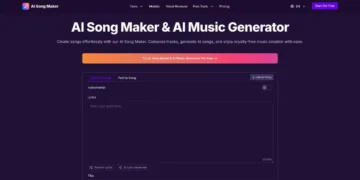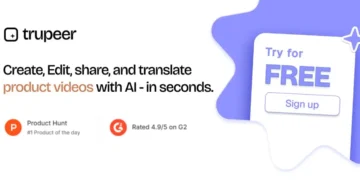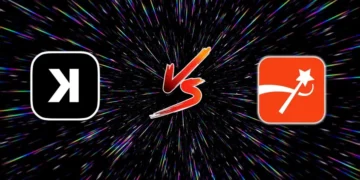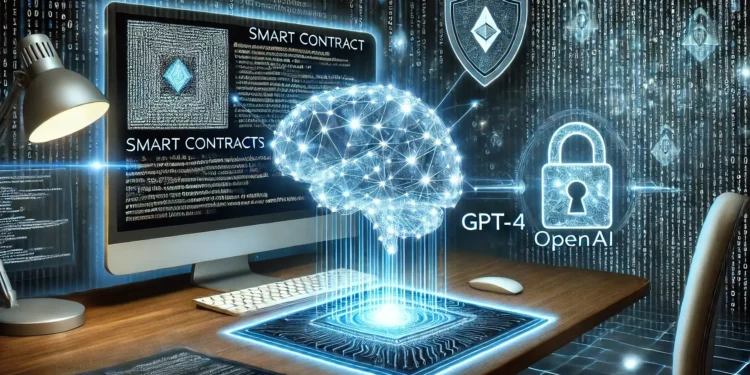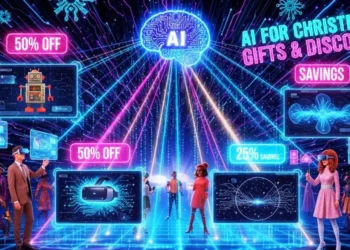Imagine deploying a smart contract worth millions of dollars, only to discover a critical vulnerability that hackers exploit within hours. This nightmare scenario is all too real in the blockchain world, where smart contract vulnerabilities have led to losses exceeding billions of dollars. As blockchain technology evolves, the need for robust security audits has never been more urgent. Enter OpenAI’s GPT-4, a cutting-edge AI model promising to revolutionize how we detect vulnerabilities in smart contracts. But can it truly replace human auditors? How effective is it at identifying risks like reentrancy attacks or integer overflows?
In this comprehensive guide, we’ll explore how GPT-4 analyzes smart contracts for vulnerabilities, its strengths and limitations, and the future of AI in blockchain security.
The Growing Importance of Smart Contract Security
Smart contracts are self-executing agreements coded to run on blockchains like Ethereum. They automate transactions without intermediaries, but their immutable nature means that any vulnerability can lead to catastrophic financial losses. Remember the infamous DAO attack in 2016? It resulted in a $60 million loss due to a reentrancy vulnerability 10. Such incidents highlight the critical need for robust vulnerability detection tools.
Traditional methods like static analysis (e.g., Slither, Mythril) and dynamic analysis (e.g., fuzzing, symbolic execution) have been instrumental. However, they often struggle with complex vulnerabilities that require deeper semantic understanding. This is where AI-powered tools like GPT-4 come into play. But how effective are they really?
How GPT-4 Approaches Smart Contract Analysis
OpenAI’s GPT-4 is a multimodal LLM trained on vast amounts of text and code data. When tasked with analyzing smart contracts, it leverages its natural language processing (NLP) capabilities to understand code context, identify patterns, and flag potential issues. Here’s a breakdown of its process:
Code Comprehension: GPT-4 parses Solidity code similarly to how a human auditor would, recognizing functions, variables, and control structures.
Pattern Recognition: It draws from its training data to identify common vulnerability patterns like integer overflows, access control issues, or reentrancy risks.
Contextual Analysis: By understanding the relationships between different parts of the code, it can spot subtle flaws that static tools might miss.
However, studies and experiments reveal mixed results. For instance, OpenZeppelin’s test of GPT-4 on Ethernaut challenges showed it solved 19 out of 23 pre-2021 challenges but failed in more complex scenarios. Similarly, Trail of Bits noted that while GPT-4 excels at abstract tasks, it often struggles with higher-level reasoning about concepts like ownership or cross-function reentrancy.
Limitations of GPT-4 in Smart Contract Auditing
Despite its promise, GPT-4 has significant limitations:
Hallucinations and False Positives: It sometimes invents vulnerabilities that don’t exist or provides incorrect explanations. In one test by Zellic, GPT-4 missed a critical input validation bug in a vault contract, despite being explicitly prompted.
Lack of Deep Reasoning: It can describe reentrancy attacks in natural language but fails to reliably detect them in code, especially when they involve inter-function relationships.
Token Limitations: GPT-4’s context window restricts the size of contracts it can analyze in one go, leading to fragmented analysis for larger projects.
Inconsistency: Outputs can vary significantly with slight changes in prompts or code syntax, making it unreliable for consistent audits.
Understanding Smart Contracts and Their Vulnerabilities
Before we explore how GPT-4 can assist in auditing smart contracts, let’s first understand what smart contracts are and why they are vulnerable.
What Are Smart Contracts?
A smart contract is a self-executing program stored on a blockchain that automatically enforces the terms of an agreement when predefined conditions are met. Think of it as a digital vending machine: when you insert the correct amount of money and select an item, the machine dispenses your choice without human intervention. Similarly, smart contracts execute actions such as transferring digital assets or updating records when specific conditions are fulfilled.
Smart contracts operate on blockchain networks like Ethereum, which use programming languages such as Solidity to write these contracts. Once deployed, smart contracts are immutable and transparent, meaning their code cannot be altered, and all transactions are recorded on the blockchain for everyone to see.
Why are Smart Contracts Vulnerable?
Despite their many advantages, smart contracts are not immune to vulnerabilities. Some common security issues include:
- Reentrancy Attacks: Where an external contract repeatedly calls back into the original contract before the first call is completed, potentially draining funds.
- Integer Overflow/Underflow: Arithmetic operations that exceed the maximum or minimum value of a data type, leading to unexpected behavior.
- Access Control Flaws: Improperly defined permissions that allow unauthorized users to execute sensitive functions.
- Gas Limit Issues: Exceeding the maximum amount of gas (computational resources) allocated for a transaction, causing it to fail.
Given these risks, it’s clear that smart contract auditing is crucial to ensure that contracts function as intended and are secure from potential exploits.
What are Smart Contracts and Why are they risky?
How do Smart Contracts Operate on a Blockchain?
Smart contracts are self-executing agreements coded onto blockchains like Ethereum. They automate transactions without intermediaries, ensuring transparency and efficiency. However, their immutable nature means that once deployed, flaws cannot easily be fixed. This makes pre-deployment auditing critical.
How Risky are Smart Contracts?
Smart contracts are inherently risky due to their complexity and the financial value they often handle. Common vulnerabilities include:
Reentrancy attacks: Where malicious actors repeatedly withdraw funds before balances update.
Integer overflows/underflows: Causing unexpected behavior in arithmetic operations.
Access control issues: Unauthorized users gaining control of critical functions.
According to recent studies, over 80% of vulnerabilities in smart contracts are “machine-unverifiable bugs” (MUBs) that traditional tools struggle to detect 3.
The Role of AI in Smart Contract Auditing
Can ChatGPT Analyze Contracts?
ChatGPT audit smart contracts capabilities have garnered significant attention. GPT-4, with its advanced natural language processing (NLP) abilities, can parse Solidity code and identify potential issues. However, its effectiveness varies based on the complexity of the code and the specificity of the vulnerability.
How GPT-4 Analyzes Smart Contracts for Vulnerabilities
GPT-4 uses a combination of pattern recognition and semantic analysis to review smart contract code. When prompted to “discover vulnerabilities,” it scans for known risk patterns, such as the use of tx.origin for authorization or unsafe arithmetic operations. For example, in tests conducted by SlowMist, GPT-4 successfully identified critical issues like tx.origin vulnerabilities in simple code snippets but struggled with more complex contracts.
Key Steps in GPT-4’s Analysis Process:
Code Parsing: Breaks down the Solidity code into manageable components.
Pattern Matching: Compares code against known vulnerability signatures.
Contextual Understanding: Analyzes the relationships between functions and variables.
Output Generation: Provides a natural language explanation of detected risks.
Despite its potential, GPT-4’s performance is inconsistent. In OpenZeppelin’s experiment, GPT-4 solved 19 out of 23 Ethernaut challenges but failed to explain attack vectors accurately or proposed incorrect solutions in some cases.
Limitations of GPT-4 in Smart Contract Auditing
Inability to Reason About Higher-Level Concepts
GPT-4 struggles with abstract concepts like ownership, reentrancy, and fee distribution. For instance, it may identify a vulnerable code snippet but fail to correlate changes in the owner variable with overall contract ownership logic.
Context Length and Token Limitations
GPT-4 has a finite context window, making it difficult to analyze large smart contracts comprehensively. When processing extensive codebases, it may overlook vulnerabilities due to information fragmentation.
Hallucinations and False Positives
GPT-4 sometimes generates plausible but incorrect explanations or identifies non-existent vulnerabilities. This “hallucination” issue requires human auditors to verify its outputs, reducing efficiency.
Dependence on Prompt Engineering
The quality of GPT-4’s analysis heavily relies on how prompts are structured. Minor changes in syntax or variable names can lead to vastly different results, making it unreliable for unsupervised audits.
Advanced AI-Powered Auditing Frameworks
VulnScan GPT: Combining Vector Databases and GPT Models
VulnScan GPT is a novel framework that addresses GPT-4’s limitations by integrating vector databases for efficient code storage and retrieval. It uses the following process:
Function Signature Extraction: Extracts function signatures from smart contracts using abstract syntax trees (ASTs).
Vectorization: Converts code into vectors for similarity searches.
Iterative Detection: GPT models analyze key functions based on common vulnerability scenarios, while the vector database retrieves relevant code snippets for in-depth assessment. This approach reduces token usage and improves accuracy, making it suitable for large-scale contracts.
One of the most exciting developments in this field is the introduction of VulnScan GPT, a novel framework that combines the power of GPT models with vector databases for enhanced vulnerability detection.
How VulnScan GPT Works
VulnScan GPT integrates the GPT model to preliminarily analyze and filter key functions based on common vulnerability scenarios. By using vector databases, the framework can efficiently store and retrieve patterns associated with known vulnerabilities. This dual approach allows for faster and more accurate detection, significantly improving the overall performance.
Key Features of VulnScan GPT
- Efficient Filtering: By focusing on key functions, VulnScan GPT reduces the noise and allows for more targeted analysis.
- Pattern Recognition: The use of vector databases enables the framework to quickly identify patterns that match known vulnerabilities.
- Scalability: VulnScan GPT is designed to handle large volumes of smart contract code, making it suitable for enterprise-level applications.
Case Studies and Performance Metrics
Early adopters of VulnScan GPT have reported impressive results, with the framework achieving higher detection rates and lower false positives compared to traditional methods. For example, in a recent study, VulnScan GPT successfully identified 90% of known vulnerabilities in a test set of smart contracts, outperforming both manual audits and other AI-driven tools.
VulnHunt-GPT: A Smart Contract Vulnerabilities Detector Based on OpenAI ChatGPT
Another innovative approach is VulnHunt-GPT, which builds on the foundation of OpenAI’s ChatGPT to provide a specialized tool for smart contract vulnerability detection.
The Core Idea Behind VulnHunt-GPT
VulnHunt-GPT leverages the conversational abilities of ChatGPT to interact with developers and provide real-time feedback on potential vulnerabilities. By asking targeted questions and offering detailed explanations, VulnHunt-GPT acts as a virtual assistant, helping developers identify and fix issues as they write code.
Practical Applications
Imagine writing a smart contract and having an AI assistant that not only points out potential vulnerabilities but also explains why they are problematic and suggests fixes. This is the promise of VulnHunt-GPT. By integrating seamlessly into the development process, it helps ensure that security is a priority from the very beginning.
User Experience and Feedback
Developers who have used VulnHunt-GPT praise its intuitive interface and the quality of its insights. One user noted, “It’s like having a security expert looking over your shoulder as you code. The explanations are clear, and the suggestions are actionable.” This kind of real-time assistance can significantly reduce the time and effort required for manual audits.
Detect Llama: Fine-Tuned Open-Source Models
Detect Llama is a fine-tuned version of Meta’s Code Llama model, specifically designed for smart contract vulnerability detection. In tests, it outperformed GPT-4 in binary classification tasks, achieving an F1 score of 0.776 compared to GPT-4’s 0.66 4. This demonstrates that specialized models can surpass general-purpose AI tools like GPT-4.
Case Study: OpenZeppelin’s Experiment
OpenZeppelin tested GPT-4 on 28 Ethernaut challenges. While it solved most challenges introduced before its training data cutoff (September 2021), it failed in four of the five latest tasks. The experiment highlighted that GPT-4 lacks knowledge of post-2021 developments and cannot learn from experience.
Several studies have explored the effectiveness of GPT-4 in smart contract auditing:
- Evaluation of ChatGPT’s Smart Contract Auditing Capabilities (De Andrs and Lorca, 2021): This study found that GPT-4 demonstrated impressive partial detection capabilities for certain vulnerabilities, though its performance on more complex issues was limited.
- VulnScan GPT (2024): A framework integrating GPT-4 for preliminary analysis and filtering of key functions based on common vulnerability scenarios showed promising results in identifying potential security risks.
- Detect Llama (2024): Researchers fine-tuned open-source models to outperform GPT-4 in specific vulnerability detection tasks, indicating that while GPT-4 is powerful, specialized models can offer enhanced performance in certain contexts.
Best Practices for Using GPT-4 in Smart Contract Auditing
1. Use AI as a Supplementary Tool
GPT-4 should complement, not replace, human auditors. It excels at initial code screenings and identifying simple vulnerabilities but requires human verification for complex issues.
2. Implement Iterative Testing
For large contracts, use batched auditing techniques. Break the code into smaller segments and analyze them individually to avoid context length limitations.
3. Fine-Tune Models for Specific Tasks
Fine-tuning GPT-4 on datasets of labeled vulnerabilities can improve its accuracy. Studies show that fine-tuned models achieve up to 95% accuracy in detecting specific vulnerability types.
4. Combine with Traditional Tools
Integrate GPT-4 with static analysis tools like Slither or Mythril to reduce false positives and enhance coverage.
The Auditing Process: A Step-by-Step Guide
While GPT-4 can significantly aid in the auditing process, it’s essential to understand the broader steps involved in conducting a thorough smart contract audit. Here’s a step-by-step guide:
Step 1: Collect Documentation
Gather all relevant documentation, including the smart contract code, specifications, and any associated data or dependencies. This information provides context for the audit and helps ensure that all aspects of the contract are reviewed.
Step 2: Automated Testing
Use automated tools like MythX or Slither to perform initial scans of the contract code. These tools can quickly identify common vulnerabilities and provide a baseline assessment of the contract’s security.
Step 3: Manual Review
Conduct a line-by-line manual review of the contract code. This step is crucial for identifying more complex or subtle vulnerabilities that automated tools might miss. Experienced auditors look for issues such as improper logic flow, incorrect data handling, and potential attack vectors.
Step 4: Classification of Findings
Categorize identified vulnerabilities based on their severity—critical, high, medium, or low. This classification helps prioritize remediation efforts and ensures that the most significant risks are addressed first.
Step 5: Remediation and Re-audit
Work with developers to fix identified vulnerabilities and then re-audit the updated contract to confirm that the issues have been resolved. This iterative process ensures that the final deployed contract is secure and functions as intended.
The Role of GPT-4 in Smart Contract Auditing
With the rise of Large Language Models (LLMs) like GPT-4, there’s growing interest in leveraging AI to enhance smart contract auditing processes. GPT-4, known for its exceptional performance in text analysis and generation, holds promise as a powerful analytical tool for identifying vulnerabilities in smart contract code.
How GPT-4 Analyzes Smart Contracts
GPT-4 can assist in smart contract auditing in several ways:
- Code Understanding and Interpretation: GPT-4 can parse complex smart contract code written in languages like Solidity, understanding the logic and flow of the contract. This capability allows it to identify potential issues that might not be immediately apparent to human auditors.
- Vulnerability Detection: By training on large datasets of known vulnerabilities, GPT-4 can recognize patterns indicative of common security flaws. For example, it can flag potential reentrancy risks or incorrect access control mechanisms.
- Automated Testing: GPT-4 can generate test cases to simulate various scenarios and interactions with the smart contract. This automated testing helps uncover edge cases and unexpected behaviors that could lead to vulnerabilities.
- Explanation and Remediation: Not only can GPT-4 identify issues, but it can also provide explanations for why a particular piece of code is problematic and suggest remediation strategies. This guidance can be invaluable for developers looking to fix vulnerabilities efficiently.
The Future of AI in Smart Contract Auditing
Toward Hybrid Auditing Systems
The future lies in hybrid systems that combine AI’s speed with human expertise. Frameworks like VulnScan GPT and Detect Llama pave the way for more efficient and accurate audits 34.
Improved Context Handling
Upcoming AI models with larger context windows will better handle complex contracts, reducing the need for batched processing.
Real-Time Learning and Adaptation
AI tools that continuously learn from new vulnerabilities and audit reports will become indispensable in the fight against evolving threats.
FAQs
Can ChatGPT audit smart contracts?
Yes, but with limitations. ChatGPT can identify simple vulnerabilities in smart contracts, such as tx.origin risks or integer overflows. However, it struggles with complex code and may produce false positives. Human verification is essential.
How do smart contracts operate on a blockchain?
Smart contracts are self-executing programs stored on blockchains. They automatically execute when predefined conditions are met, eliminating the need for intermediaries.
Is Solidity used for smart contracts?
Yes, Solidity is the primary programming language for Ethereum-based smart contracts. It is designed for writing decentralized applications and is widely used in the blockchain industry.
How are smart contracts audited?
Smart contracts are audited through a combination of manual code reviews, static analysis tools (e.g., Slither), dynamic analysis (e.g., Mythril), and AI-powered tools like GPT-4. The process involves identifying vulnerabilities, testing exploit scenarios, and recommending fixes.
Can smart contracts be vulnerable?
Absolutely. Smart contracts are prone to vulnerabilities like reentrancy attacks, integer overflows, and access control issues. These risks make thorough auditing critical before deployment.
How to validate a smart contract?
Validation involves testing the contract in a simulated environment, reviewing its code for vulnerabilities, and conducting formal verification. AI tools like GPT-4 can assist but should not be relied upon exclusively.
Can GPT-4 Replace Human Auditors?
While GPT-4 and tools like VulnScan GPT offer powerful capabilities, they are not yet ready to completely replace human auditors. These tools are best used as complementary resources that can enhance the efficiency and accuracy of manual reviews. Human expertise is still crucial for understanding complex business logic and making nuanced judgments.
How Accurate is GPT-4 in Detecting Vulnerabilities?
GPT-4 has shown high precision in detecting certain types of vulnerabilities, but its recall rates are lower, meaning it may miss some issues. Fine-tuned models like VulnScan GPT and VulnHunt-GPT aim to address these limitations by providing more targeted and efficient analysis.
What Are the Limitations of Using AI for Smart Contract Auditing?
AI models like GPT-4 are limited by their training data and may struggle with novel or complex vulnerabilities that haven’t been widely documented. Additionally, these models can produce false positives, requiring human oversight to ensure accurate results.
How Can I Integrate These Tools into My Development Process?
Tools like VulnHunt-GPT are designed to integrate seamlessly into existing development environments. You can incorporate them as part of your continuous integration/continuous deployment (CI/CD) pipeline or use them interactively during the coding process to get real-time feedback.
Conclusion
OpenAI’s GPT-4 represents a significant leap forward in smart contract vulnerability detection, but it is not yet a replacement for human auditors. Its ability to analyze code is impressive for simple vulnerabilities, but limitations in reasoning, context handling, and reliability necessitate a hybrid approach. As AI technology evolves, tools like VulnScan GPT and Detect Llama promise to enhance auditing efficiency and accuracy. For now, developers should leverage GPT-4 as a supplementary tool alongside traditional methods and human expertise.
The integration of AI tools like OpenAI’s GPT-4, VulnScan GPT, and VulnHunt-GPT represents a significant leap forward in smart contract security. While these technologies are not without their limitations, they offer powerful resources for developers looking to enhance the security and reliability of their smart contracts.
As these tools continue to evolve, we can expect even greater accuracy and efficiency in vulnerability detection. However, it’s essential to remember that AI is a tool, not a replacement for human expertise. By combining the strengths of AI with the insights of experienced auditors, we can create a more secure and resilient blockchain ecosystem.














